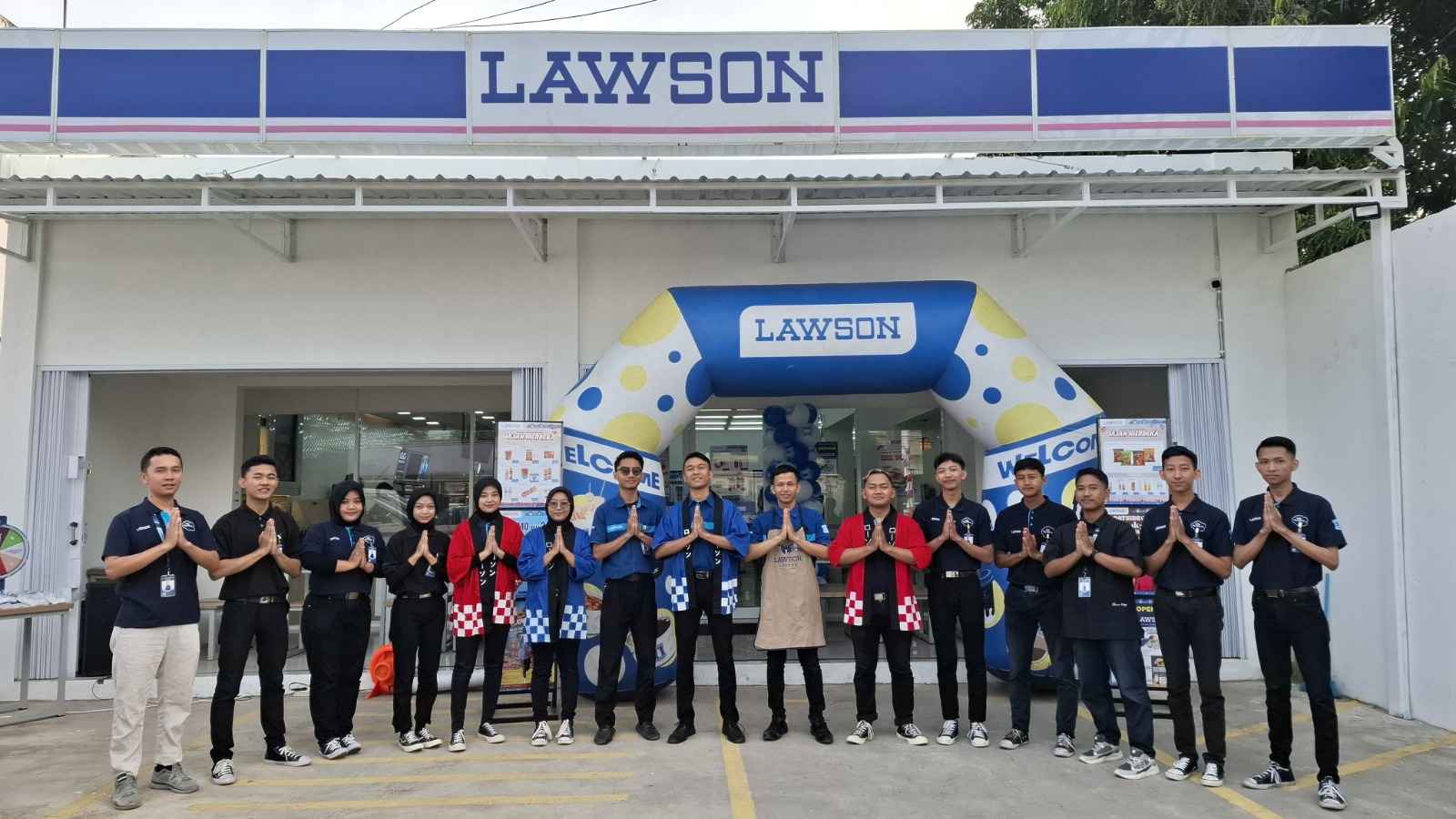PT Sumber Alfaria Trijaya Tbk (AMRT), the operator of Alfamart minimarkets, has officially acquired PT Lancar Wiguna Sejahtera, the franchise holder of Lawson convenience stores in Indonesia.
The acquisition, valued at IDR 200.45 billion, was made through the purchase of 1,484,855,160 shares from PT Midi Utama Indonesia Tbk (MIDI), as reported to the Indonesia Stock Exchange (IDX).
According to AMRT Corporate Secretary Tomin Widian, “This transaction does not constitute a conflict of interest and therefore does not require prior approval from the General Meeting of Shareholders as regulated under POJK 42/2020 and is not classified as a material transaction under POJK 17/2020.”
From Franchise to Subsidiary: Lawson’s Transition Under AMRT
Lawson, a Japanese convenience store brand, first entered Indonesia in 2011 through a franchise agreement with MIDI.
In 2018, it became a standalone legal entity under PT Lancar Wiguna Sejahtera and began operations in October of that year.
Before this acquisition, Lawson was considered a second-tier subsidiary under MIDI. Following the transaction, Lawson is now directly owned by AMRT.
AMRT controls 77.09% of MIDI, while the remaining shares are held by Rullyanto (0.42%), Maria Theresia (0.23%), Endang Marwati (0.02%), and public shareholders (22.24%).
Alfamart’s Business Evolution: Key Milestones from 1989 to 2023
Alfamart began in 1989 as a family-owned trading company founded by Djoko Susanto.
In December 1989, a majority stake was sold to PT HM Sampoerna Tbk. The Alfamart brand was introduced in 2002 after acquiring 141 Alfa Minimart stores.
The company went public in 2009 and expanded to Bali, followed by Sumatra and Kalimantan.
In 2014, Alfamart entered the Philippines market. By 2023, AMRT operated over 19,000 stores in Indonesia and 1,600+ in the Philippines, supported by four warehouses abroad.
Key digital initiatives include AlfaMind, a virtual store using Augmented Reality, and Alfagift, a mobile app offering exclusive promotions and delivery services.
Subsidiaries Under AMRT: Supporting Retail Growth
AMRT operates through a network of subsidiaries that serve different functions in its retail ecosystem:
- PT Midi Utama Indonesia Tbk (MIDI) – Manages Alfamidi retail chain
- Ownership: 77.09%
- PT Sumber Indah Lestari (SIL) – Focuses on health equipment and cosmetics retail
- Ownership: 65%
- PT Sumber Trijaya Lestari (STL) – Engages in wholesale consumer products
- Ownership: 99.95%
- Alfamart Retail Asia Pte. Ltd. (ARA) – Investment company handling overseas expansion
- Ownership: 100%
- PT Global Loyalty Indonesia (GLI) – Specializes in e-commerce and data applications
- Ownership: 75%
Each subsidiary is registered under AMRT's business address at Alfa Tower, Alam Sutera, Tangerang.
Retail Industry Outlook in 2025: Growth Faces New Headwinds
Retail businesses in Indonesia are expected to face multiple challenges in 2025. According to HIPPINDO Vice Chair Fetty Kwartati, the year will be “precautious” due to macroeconomic pressures.
A proposed VAT increase to 12% is expected to strain consumer spending. “If VAT increases, we hope the government provides stimulus to drive visitor traffic to shopping centers.
Without that, the impact could be substantial,” Fetty said on December 23.
Other industry concerns include:
- Intensifying competition in pricing, innovation, and services
- Growing demand for contactless payments, AI-driven services, and virtual shopping
- Higher operating costs from wages, rental fees, and inflation
- Supply chain disruptions for global brands due to import regulations and quotas
- Evolving consumer behavior, especially among younger, online-first shoppers
Programs like Harbolnas, Bina Diskon, and Epic Sale are considered essential by retailers to stimulate spending despite rising costs and weaker purchasing power.
PHOTO: LAWSON
This article was created with AI assistance.
Read More






 Wednesday, 17-12-25
Wednesday, 17-12-25







